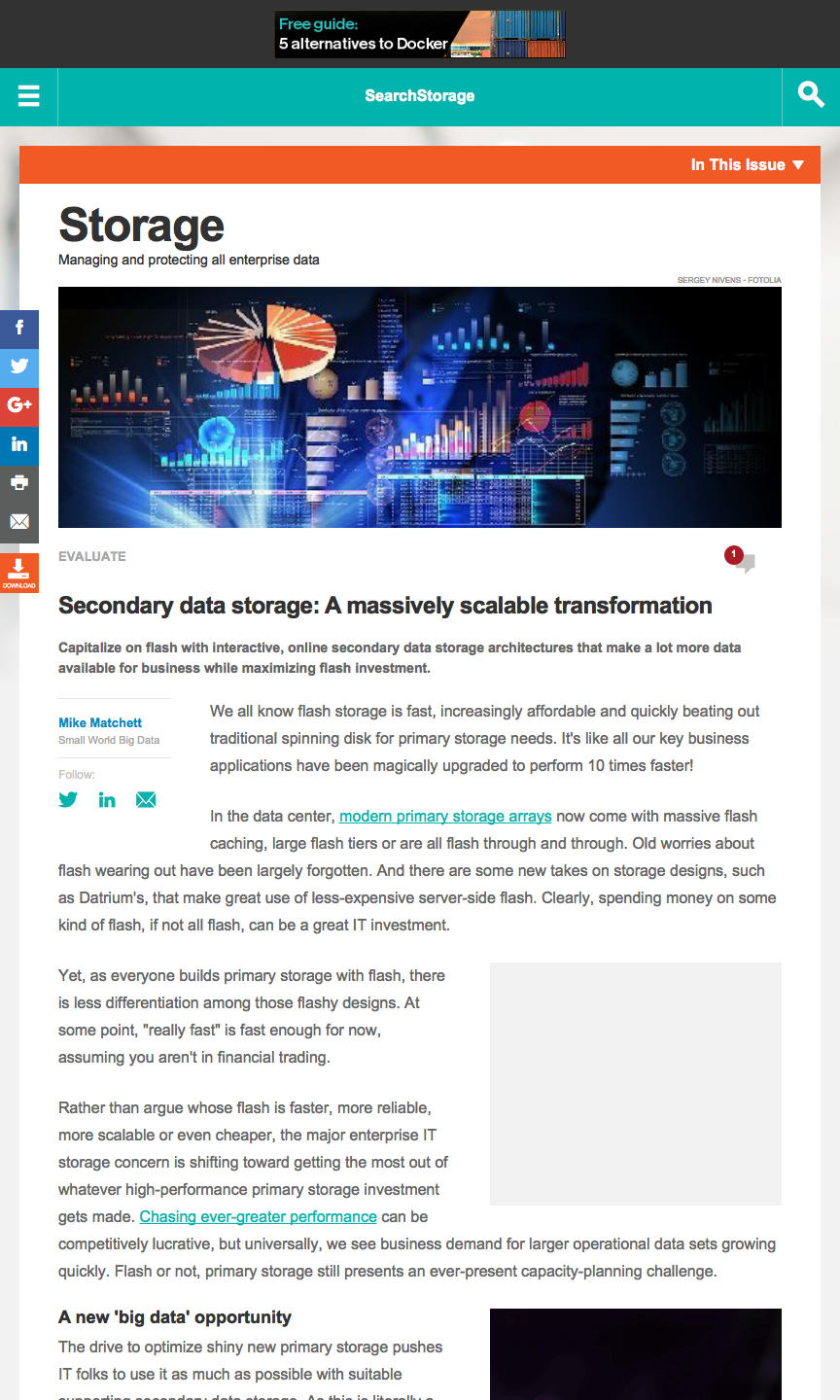Secondary data storage: A massively scalable transformation

An IT industry analyst article published by SearchStorage.
 Capitalize on flash with interactive, online secondary data storage architectures that make a lot more data available for business while maximizing flash investment.
Capitalize on flash with interactive, online secondary data storage architectures that make a lot more data available for business while maximizing flash investment.
Mike Matchett
Small World Big Data
We all know flash storage is fast, increasingly affordable and quickly beating out traditional spinning disk for primary storage needs. It’s like all our key business applications have been magically upgraded to perform 10 times faster!
In the data center, modern primary storage arrays now come with massive flash caching, large flash tiers or are all flash through and through. Old worries about flash wearing out have been largely forgotten. And there are some new takes on storage designs, such as Datrium’s, that make great use of less-expensive server-side flash. Clearly, spending money on some kind of flash, if not all flash, can be a great IT investment.
Yet, as everyone builds primary storage with flash, there is less differentiation among those flashy designs. At some point, “really fast” is fast enough for now, assuming you aren’t in financial trading.
Rather than argue whose flash is faster, more reliable, more scalable or even cheaper, the major enterprise IT storage concern is shifting toward getting the most out of whatever high-performance primary storage investment gets made. Chasing ever-greater performance can be competitively lucrative, but universally, we see business demand for larger operational data sets growing quickly. Flash or not, primary storage still presents an ever-present capacity-planning challenge.
A new ‘big data’ opportunity
The drive to optimize shiny new primary storage pushes IT folks to use it as much as possible with suitable supporting secondary data storage. As this is literally a new “big data” opportunity, there is a correspondingly big change happening in the secondary storage market. Old-school backup storage designed solely as an offline data protection target doesn’t provide the scale, speed and interactive storage services increasingly demanded by today’s self-service-oriented users.
We’re seeing a massive trend toward interactive, online, secondary storage architectures. Instead of dumping backups, snapshots and archives into slow, near-online or essentially offline deep storage tiers, organizations are finding it’s worthwhile to keep large volumes of second-tier data in active use. With this shift to online secondary data storage, end users can quickly find and recover their own data like they do with Apple’s Time Machine on their Macs. And organizations can profitably mine and derive valuable insights from older, colder, larger data sets, such as big data analytics, machine learning and deep historical search.
If that sounds like a handy convergence of backup and archive, you’re right. There’s increasingly less difference between data protection backup and recovery and retention archiving…(read the complete as-published article there)
